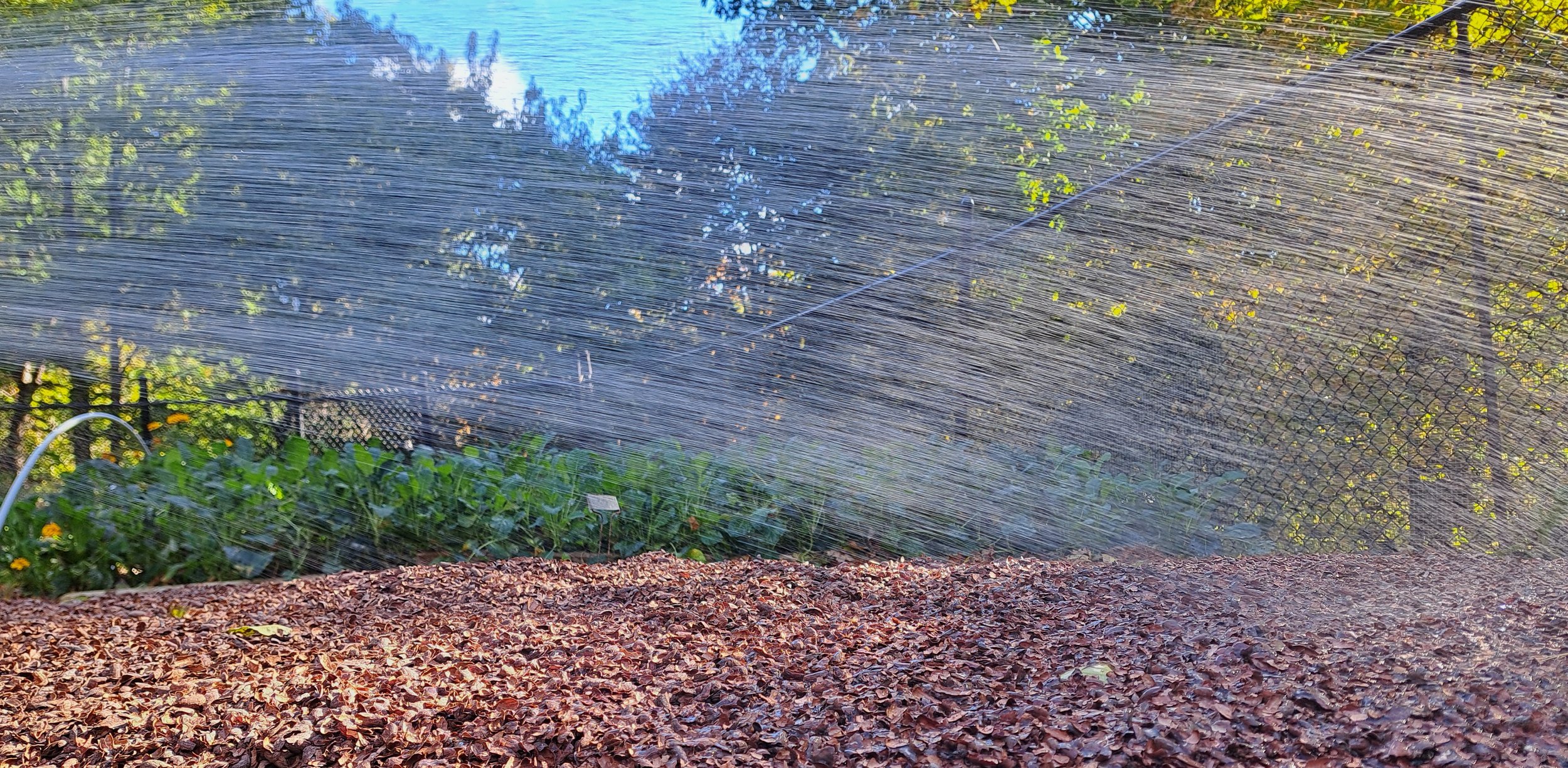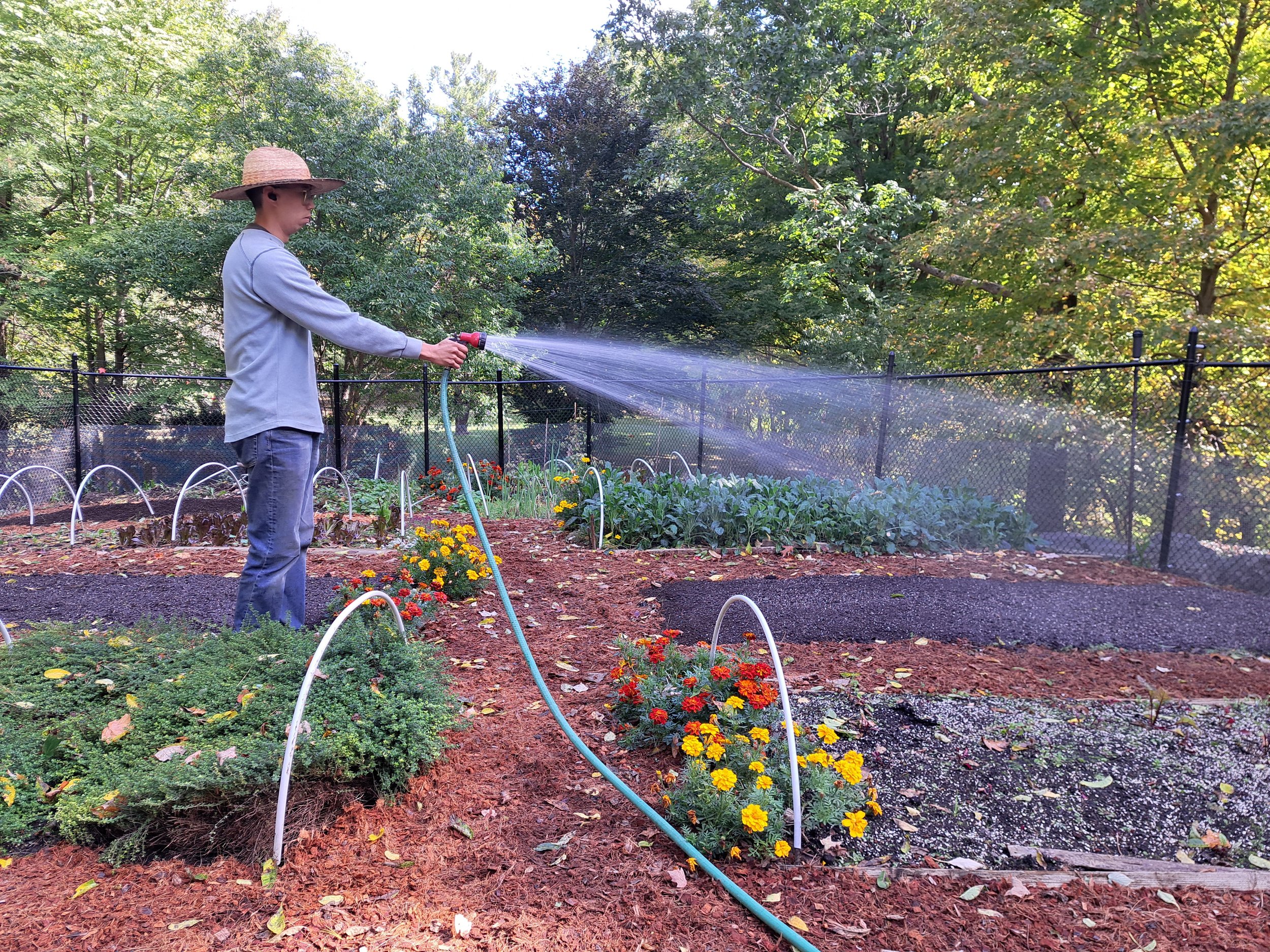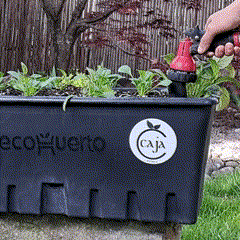
Watering Demystified

Watering can be challenging. Should I water in the morning or evening? How many days per week is enough? What happens if I forget to water for a few days? Is it better to water quickly all at once or go slow and gradually let the water soak into the soil?
We get it. Plants can be complicated and watering is one of the biggest human elements we are in direct control of. By learning the fundamentals of watering, and why our planters solve almost all these issues, you can save yourself countless hours of time and energy, and help to ensure your plants are happy and thriving.
Our Watering Answer
To simplify and streamline the watering process, the answer is sub-irrigation, or watering from below. Both the Caja and EarthBox are sub-irrigated planters*, which means they have a built-in reservoir and an aeration screen that acts like a false bottom to separate the soil from the reservoir.
Sub irrigation isn't a new technique and we haven't reinvented the wheel. In fact, it is a tried and tested technique that was first described as far back as 1895. You'll see it in small-scale applications like seed starting trays and in larger hydroponic systems. We've applied the same principles to our containers, which we believe will solve 95% of your potential watering issues.
To learn more about the principles and science behind how it works, keep on reading. In the meantime, if you're ready to act, visit our shop to purchase today.
*Many people also refer to Sub-irrigated planters as SIPs or self-watering planters.
Sub-Irrigation works through the process of capillary action, and diffusion.
Water gets absorbed from the reservoir and gets pulled up by capillary action to hydrate and saturate your soil. As the water moves throughout the soil, nutrients from the soil and fertilizer get dissolved in the water and are transported along to feed and hydrate your plants. As long as there is water in the reservoir, your plants will stay happy and hydrated.
For capillary action,if you're ever left your towel dangling at the side of a pool or bathtub, you'll know how water is able to move up against gravity. By the same principle, as long as there is water in the reservoir, your soil will stay moist, and your plants will absorb just the amount they need. Not too much, and not too little.
With diffusion, things in high concentration migrate to areas of lower concentration. Your granular fertilizer (assuming you added it during the setup) are the highly concentrated nutrients, and over time, it will slowly diffuse and dissolve into your potting soil (low concentration of nutrients) and be made available to your plants throughout the gardening season.
Why Sub-Irrigation is the Answer:
How sub-irrigation follows the most common watering advice.
Plants Like Evenly Moist Soil: Providing consistent soil moisture encourages strong root development and healthy plants. Uneven watering causes stress and can stunt plant growth. With the 10L water reservoir, your plants have a large reservoir to draw from, leading to strong, healthy plant growth.
Avoid Overhead Watering: Watering from above increases the chance of disease as bacterial and fungal organisms can splash from the soil up onto plant stems and leaves. Wet leaves are also more susceptible to bacterial and fungal issues, and there is a small risk of burning due to the magnifying effect of water drops sitting on the leaves. By watering from below and using the mulch cover, you can minimize and virtually eliminate these risks (of course except for natural rainfall).
Water early in the morning or in the evening: Midday watering causes the highest amount of evaporation loss from the hot sun and warm soil. This is why experts advise watering in the morning or evening. However, by watering from below, it doesn't matter if you water in the morning, noon, evening, or night as the water in the container will allow for efficient water absorption no matter when you decide to water. You can set your own watering schedule and let the reservoir (and science) work for you.
Water Long and Deep: Thorough deep watering, encourages plant roots to grow deeper and become more resilient. Shallow watering causes roots to stay near the surface. The reservoir encourages roots to grow deep and throughout the container, as water is moving up from the bottom and will be distributed evenly throughout your soil media.
Avoid Waterlogged Soils: Plant roots need air to breathe too! Unless you are growing aquatic plants with roots adapted to growing underwater, the aeration screen is the secret to providing consistent moisture, without waterlogging. The aeration screen ensures air and oxygen can reach the roots even through the small channels in the soil.
How does this save you time and money?
Sub-irrigation and the built-in 10L reservoir allows you maximum flexibility of when, how frequently, and what time to water. Customers often tell us their biggest benefit is not having to stress or worry about getting things perfect. Some people like to water every day - and it isn’t a problem because our containers are impossible to overwater (excess water will just come out the overflow hole). Here are a few real world examples on how our customers have benefitted from our containers.
1. Watering 1x per week: In the spring, when plants are small and temperatures aren't yet too hot, the 10L reservoir will allow approximately 1 week between watering. Note that if you are growing large/thirsty plants like tomatoes, you will need to increase the frequency of watering as your plants grow and get bigger. Regardless of when you water, you can be confident your plants will not be thirsty even if you have a busy schedule and don't have time to water every day.
2. Weekend getaways: For weekend or long weekend trips, simply fill up the reservoir before you leave. Your plants will be just fine when you come back. Stop worring about coming home to dried up or dead plants because you forgot to water, or because there was a heat wave while you were away. You’ve invested in your garden, spent the time to get good soil and the weeks to grow your plants to their current stage - why waste all that effort by forgetting to water your plants if you go away for a weekend getaway?
3. Efficient water usage: Sub-irrigated planters are very efficient when it comes to watering since there is less waste from runoff or evaporation (compared to traditional gardens and other containers). Simply fill the reservoir until you see water coming out of the overflow hole. Stop guessing or eyeballing if you've watered enough and don't about a crazy water bill either.
4. Easy training: If you have kids, neighbours, friends, or family who want to help in your garden, getting them involved is quick and simple. Training can take only a few minutes and we’ve worked with kindergarten students, seniors and people with diverse abilities to quickly learn and participate.
5. Delicious Produce: One of our greatest joys is knowing that we are eating the freshest, healthiest, and tastiest produce you’ve grown and harvested yourself. Enjoy that fresh from the farm experience, but right at home with your own container garden.
6. Moving? Take Your Garden With You! You’ve invested time, money, and energy into your garden. Unlike a traditional raised bed or in-ground garden that gets left behind if you need to move, container gardens are portable so you can take your plants and garden with you if you need to move.
One of our favourite ways to think about the reservoir is like an insurance policy that you get to take advantage of every time there is a dry or extended period between watering. It comes included with every container that we offer and not only provides you with healthier and happier plants, but it can pay for itself when you think about all the time, energy, and money you can save if your plants were to die and you need to start over.


